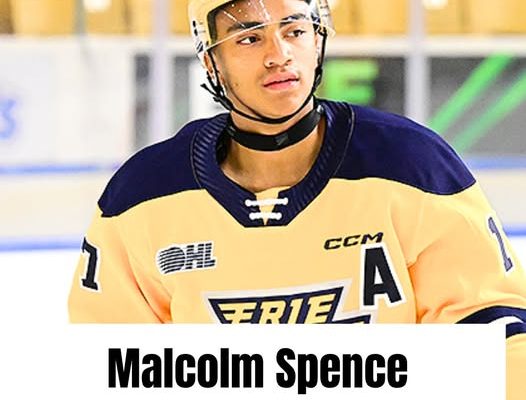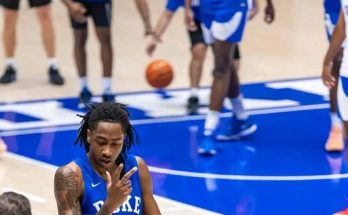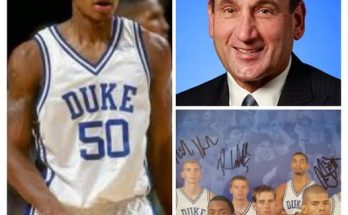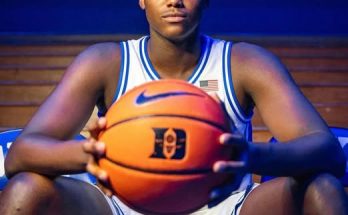The buzz surrounding the New York Rangers’ top draft pick had been steadily building since his name was called on draft night, but the World Junior Summer Showcase provided the perfect stage for him to either confirm or dismantle the growing hype. Under the bright lights and in front of a gallery of scouts, coaches, and media members, the young prospect didn’t just meet expectations — he obliterated them. From the very first shift, it was clear he wasn’t out there to simply test the waters; he was there to dominate, to prove beyond a shadow of a doubt that he belonged among the elite, and to silence any lingering skepticism about his readiness for the NHL. The showcase wasn’t merely an exhibition for him — it was a statement. Every time he stepped on the ice, the intensity radiating from him was palpable, and it was matched only by his efficiency in executing every task thrown his way. Whether it was battling in the corners, intercepting passes in the neutral zone, or breaking out of the defensive end with sharp, calculated puck movement, his play screamed maturity and composure. The hallmark of his game throughout the event was his relentless commitment to the fundamentals, executed with such consistency that it left even seasoned evaluators shaking their heads in admiration.
From a physical standpoint, the Rangers’ prospect looked like he’d already been in a professional strength and conditioning program for years. His balance and core strength allowed him to hold his ground against bigger opponents, and his acceleration made it nearly impossible for defenders to contain him once he gained even half a stride. Offensively, his instincts were razor-sharp — he always seemed to be in the right place at the right time, ready to jump on a loose puck or exploit a defensive lapse. But perhaps even more impressive was his commitment to the defensive side of the game, something young players often overlook when trying to make a splash. Time and time again, he backchecked with urgency, positioned himself perfectly to cut off lanes, and applied stick pressure that forced turnovers in critical moments. This wasn’t the kind of flashy, highlight-reel performance that relies on luck or opportunistic bounces; it was the kind of well-rounded, cerebral dominance that NHL coaches drool over. The way he read plays several steps ahead, combined with his ability to anticipate opposing strategies, gave him the appearance of a player far beyond his years.
Those who doubted him before the tournament — pointing to questions about whether his production in junior hockey would translate against top-tier competition — were forced to reassess. Here, against the very best of his age group and under the scrutiny of scouts from nearly every NHL franchise, he didn’t just hold his own; he imposed his will on the game. His confidence was evident, but it wasn’t the cocky, self-indulgent kind. Instead, it was a calm, ice-cold assurance, the type of mentality that says, “I know I can win every battle, and I’m going to prove it over and over again.” His teammates fed off his energy, his opponents couldn’t shake him, and his coaches trusted him in every situation — power play, penalty kill, even late-game defensive stands when the pressure was at its highest. The Rangers’ management, watching closely from the stands, must have been smiling quietly, knowing they might have struck gold with a player who not only brings skill and grit but also the mental fortitude needed to survive in the NHL grind.
Scouts weren’t shy in their praise after the event. Some remarked on how rare it was to see a young player with such a complete game at this stage in his development. Others compared his on-ice demeanor to that of seasoned NHL veterans, noting that his body language never wavered — no visible frustration after missed chances, no recklessness when trailing a play, just steady, composed execution. Even when the physicality ramped up and opponents tried to knock him off his rhythm with big hits, he absorbed the contact, got back up, and went right back to work as if nothing had happened. It’s that resilience, that ability to stick to the game plan under duress, that has NHL readiness written all over it. The World Junior Summer Showcase isn’t a place where roster spots are officially handed out, but performances like his tend to accelerate timelines. For a player like him, the path from prospect to pro suddenly feels much shorter.
The chemistry he built with his linemates was another major takeaway. His passing vision allowed him to set up scoring chances that his teammates might not have otherwise had, and he displayed a knack for adjusting his style to complement whoever was on his wing. If the line needed speed, he pushed the pace; if it needed physicality, he delivered heavy forechecks; if it needed control, he slowed the game down and worked possession in the offensive zone. That adaptability is a weapon that not every young player possesses, and it’s part of what makes him so intriguing to the Rangers’ coaching staff. They see someone who can plug into multiple roles without losing effectiveness, a Swiss Army knife on skates who thrives no matter the circumstances.
Beyond the raw performance metrics — the zone entries, faceoff wins, and puck recoveries — there was an intangible quality to his game that can’t be taught. It was in the way he carried himself between shifts, the way he communicated on the bench, the way he kept his focus sharp even when off the ice. He wasn’t just playing in the showcase; he was leading within it, setting a tone for effort and precision that teammates naturally gravitated toward. This is a trait that can define a career, especially in New York, where the spotlight burns brighter than almost anywhere else in hockey. The Rangers know the pressures that come with Madison Square Garden, and finding a young player who not only survives under that kind of heat but actually thrives in it is a rare gift.
By the end of the showcase, the conversation around him had shifted completely. What started as cautious optimism had evolved into a growing belief that he might be able to contribute in the NHL sooner than anyone had projected. The phrase “NHL-ready” began circulating among scouts, not as a throwaway compliment but as a genuine assessment of where his game stands. While the Rangers will undoubtedly be careful with his development, giving him every resource to ensure long-term success, the temptation to see what he can do against the league’s best may prove too strong to resist. If his performance here is any indication, he won’t just survive in the NHL — he’ll thrive.
The doubters have been quieted for now, but in the world of professional hockey, skepticism never completely disappears. There will be more tests ahead, tougher opponents, and bigger challenges, but this showcase was a clear message: this is a player who can handle it. He plays with a chip on his shoulder, not out of insecurity, but as fuel for his relentless drive. It’s that combination of skill, grit, and unshakable mental strength that makes him so exciting for the Rangers’ future. Fans already envision him in the iconic blue sweater, gliding across the Garden ice with the same calm dominance he displayed here. If the World Junior Summer Showcase was any preview, the NHL might be about to meet its next breakout star, and the Rangers may have found a cornerstone for years to come.



